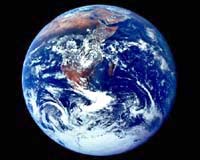
 |
Lift-off is scheduled for 10:02 GMT Sunday from Vandenberg airbase in California.
The launch was set for mid-June, but was pushed back by various technical problems.
Aura will promote understanding of the influence the composition of the atmosphere has on climate change as well as regional differences in air quality.
Scientists are also keen to know if the condition of the ozone layer, which protects terrestrial life from harmful radiation, is worsening or healing itself of the effects of pollutants and other climate phenomena.
The satellite carries four instruments that will allow it to study the atmosphere from the troposphere, at sea-level, to the stratosphere, where the ozone layer is located: a microwave limb sounder; a high-resolution limb sounder; a spectrometer and an instrument that measures ozone levels.
Britain, the Netherlands and Finland contributed 785 million dollars to build the instruments for the US mission.
"Aura, the first comprehensive laboratory in space to help us better understand the chemistry and composition of the Earth's atmosphere, is fundamentally a mission to understand and protect the very air we breathe," said NASA associate administrator for Earth Science Ghassem Asrar.
Aura weighs 2,967 kilograms (6,542 pounds) and will orbit at 704 kilometers (438 miles).
TERRA.WIRE |